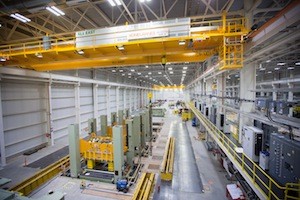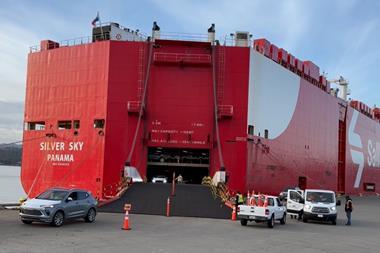 General Motors has received the first delivery of stamping press equipment to its Lansing Grand River Assembly plant in Michigan, which will be used to stamp parts for the Camaro, Cadillac ATS and CTS range of vehicles.
General Motors has received the first delivery of stamping press equipment to its Lansing Grand River Assembly plant in Michigan, which will be used to stamp parts for the Camaro, Cadillac ATS and CTS range of vehicles.
The presses are being installed at a new $174m stamping facility on site at Lansing Grand River. GM said that establishing the stamping facility there will save it around $14m a year in logistics costs tied to material handling.
The first press delivery weighed in at more than 210,000 pounds (95 metric tons) according to GM. The equipment is for the second press in the first of two stamping lines at the plant. The entire stamping line weighs more than 7.2 million pounds (3,266 metric tons). The next line will arrive at the plant in December with production for both starting in 2016. GM has not confirmed which companies are suppling the presses though Schuler and IHI are both suppliers of equipment to the company.
GM officially started shipping the Chevrolet Camero from the Lansing Grand River plant on Monday this week (October 26th), with models due at the dealerships for sale in mid-November. Production of the Camaro began at Lansing Grand River a couple of weeks ago. It is the first time the vehicle has been made in the US since 1992. Since the vehicle’s return to the market in 2009 it has been made at GM’s Oshawa plant in Ontario, Canada. The carmaker made the decision to shift production to Michigan in 2012 citing lower capital investment and improved production efficiencies as key factors.
“Assembling the next-generation Camaro at LGR consolidates the RWD [rear-wheel driver] assembly with the Cadillac CTS and ATS,” said the company in a statement. “As a result, GM will continue to deliver top-quality vehicles as efficiently as possible.”
GM has invested around $670m in the Lansing facility over the last few years. As reported last year, that investment includes a $44.5m logistics facility. The 37,000 sq.m Logistics Optimization Center, which is adjacent to the plant, began operations in the first quarter of 2015.



































